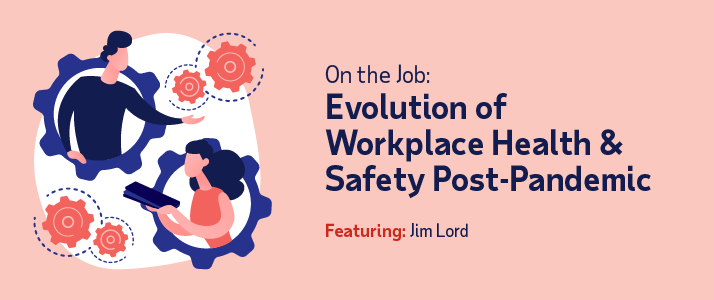How Workplace Health and Safety Has Evolved Post-Pandemic

In this "On the Job" segment from Cheddar News, Jim Lord, Senior Vice President and General Manager of ADP Insurance Services, describes the many shifts that were required to keep businesses running and employees safe during the COVID-19 pandemic, and how those changes affected – and continue to affect – businesses and employees.
The pandemic marked a shift in how companies and business leaders think about employees physical and mental health, and most have met the call. According to the ADP Research Institute, more than three quarters of employees say their company is taking appropriate health and safety measures to protect their staff.
Speaking with Cheddar News, above, Jim Lord (JL), details the toll recent challenges have taken on employee wellbeing and what kind of support employers should be providing, specifically in terms of benefit offerings.
Q: How did the pandemic accelerate the evolution of health and safety not only for employees, but for businesses as a whole?
JL: I think the pandemic really magnified the importance of what health and safety means as a business priority for leaders today. I think about the very basic concept of the service profit chain model where you focus on employees, who are then going to focus on doing great things for your customers, who will then do great things for your business, right? I think the pandemic really forced employers to double click into that whole concept of, "What does it mean to take great care of your employees today?"
The research that was mentioned earlier also showed that 53% of employees believe that their work is suffering as a result of the pandemic. In other words, 53% of employees think their work is suffering due to poor mental health. So, we're seeing a shift and top employers today are really starting to double down and focus on delivering wellbeing options to their employees.
Q: The focus on mental health has been magnified, especially over the last two years. How have employers responded to this emerging priority? It was such a shift in the mindset.
JL: Yes, it was a huge shift, right? We all had to learn almost overnight how to work from home, potentially we had children who were being schooled from home. Hopefully, we didn't have to become a caregiver, but certainly some did - and all from home, which brought new stresses to the employees. We were also trying to hold down a full-time job and remain productive, right?
I think through that environment, employers have learned how to deliver a more tailored and customized benefits approach and offerings to their employees versus a one-size-fits-all approach that they might have been offering in the past. I think employers are rethinking wellness and wellbeing. Of course they care about the financial and the physical wellbeing, but they're also starting to care about the emotional and even the social wellbeing of their employees.
The ADP Research Institute study also found that more than 50% of employees would be willing to take a pay cut today, if it meant it would improve their work life balance. And so our research shows that most employers plan to differentiate their benefit offerings to include wellness components over the next two years.
Q: How can workers themselves better access health and safety resources that are available to them?
JL: For a long time, particularly for small business owners, benefits administration was viewed as being complex and very labor intensive, but it doesn't have to be. There are so many digital solutions available today such as mobile apps that can send push notifications to keep employees informed of new benefit offerings. A key point for the viewers is that they don't have to go this alone. There are plenty of licensed agents and brokers who can partner with your company and help you explore ways to maximize the benefit offerings that you're making available to your employees.
Q: How has business preparedness evolved to address the future health and safety needs as we move forward?
JL: I think I think businesses and business owners seem to understand with a greater degree of clarity today the need to focus on what it means to keep people safe and productive at work. A key outcome of everything we've been talking about is … with changes in your business environment comes potential changes in your risk. Take cyber, for example. A lot of small business owners who may have had a brick-and-mortar retail establishment had to close their doors and to stay afloat, they had to shift to a digital ecommerce solution. But with that change in business operations comes now changes to risk such as cyber threats and cyber-attacks that you may not have had to consider in the past.
I think another great example are restaurants. Through the pandemic, many restaurants successfully figured out how to close their dining rooms and transitioned over to a take-out and delivery model to stay afloat. With that change in business operations, there was waitstaff delivering food. Well, if you have a workers' compensation insurance policy, there are now implications to that policy. I think here's where there's value in learning to protect your employees; it's going to help you protect your business. Involve licensed agents and brokers who can take a fresh look at your business operations to make sure that you're mitigating risk as best you can in this in this new day and age of working.
Learn more
In the post-pandemic world of work, the organizations that prioritize people first will rise to the top. Find out how to make HR more personalized to adapt to today's changing talent landscape. Get our guide: Work is personal



